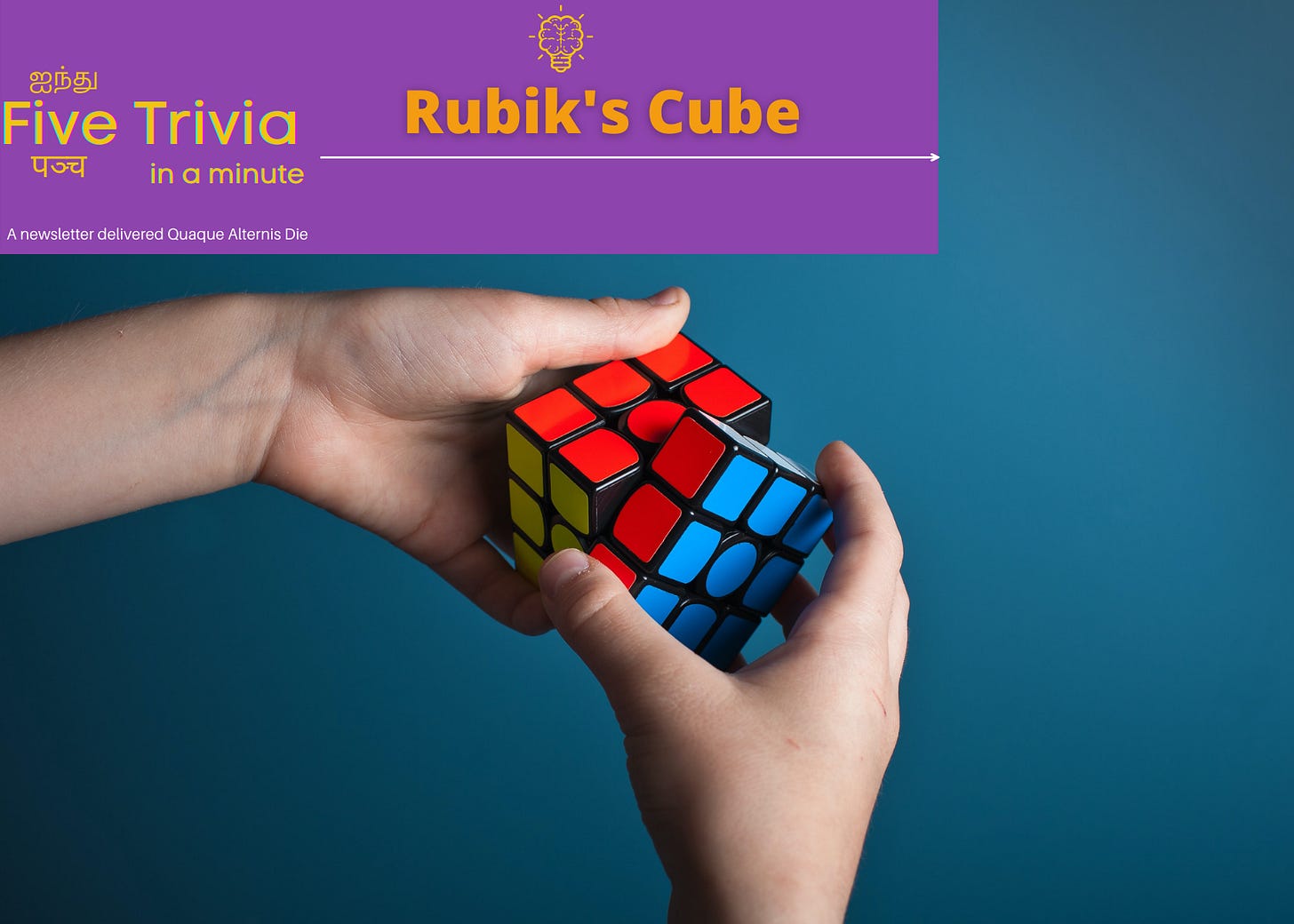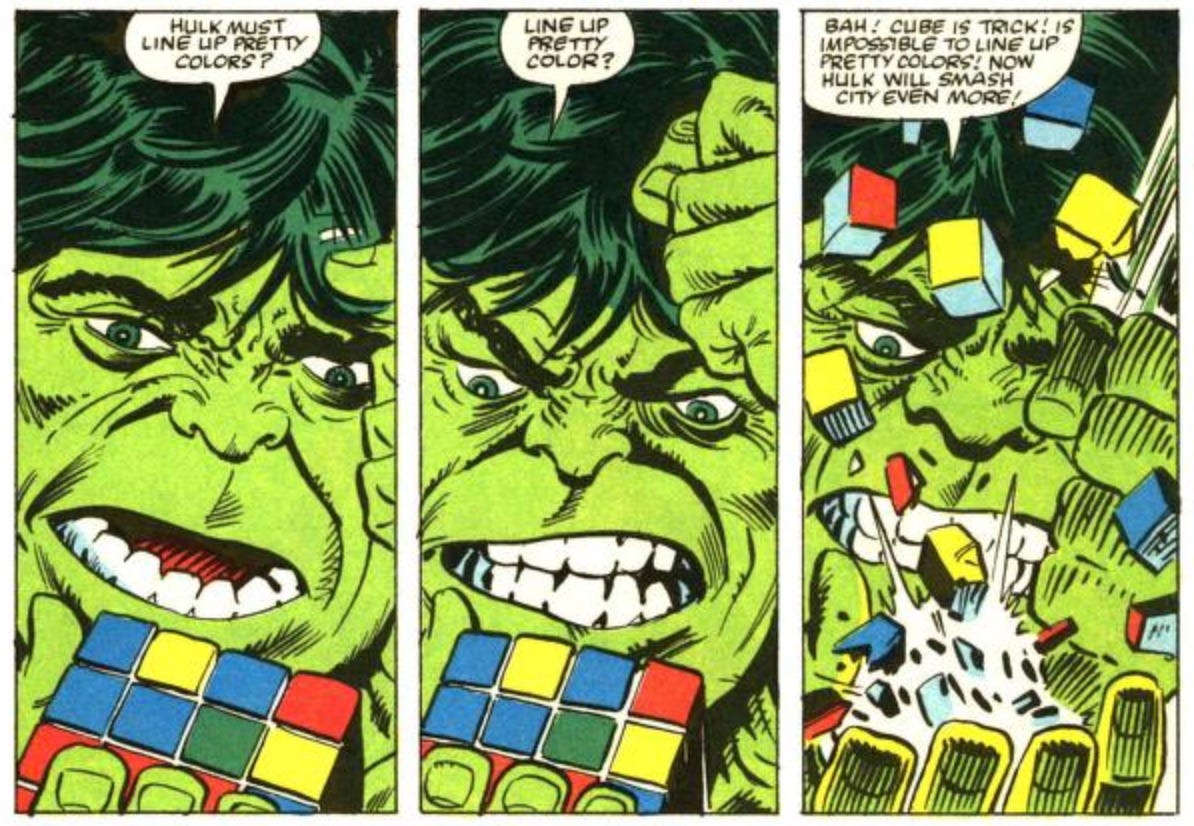In the mid-1970s, Ernő Rubik worked at the Department of Interior Design at the Academy of Applied Arts and Crafts in Budapest. He was trying to solve the structural problem of moving the parts independently without the entire mechanism falling apart. He did not realize that he had created a puzzle until the first time he scrambled his new Cube and then tried to restore it. Rubik applied for a patent in Hungary for his "Magic Cube" on 30 January 1975.
While Erno Rubik patented his invention, there are a couple of others who obtained patents by inventing near identical structures. Terutoshi Ishigi, a self-taught engineer and ironworks owner near Tokyo, got a Japanese patent in 1976. Larry D Nichols invented a 2 * 2 * 2 puzzle using magnets in March 1970 and patented it on 11 April 1972.
On the original classic Rubik's Cube, each of the six faces was covered by nine stickers, each of one of six solid colours: white, red, blue, orange, green, and yellow.
In July 2010, a team of researchers, working with Google, proved the so-called "God's number" to be 20, i.e. the maximum number of moves needed to solve any scrambled Rubik’s cube.
The first world championship was the 1982 World Rubik's Cube Championship held in Budapest on 5 June 1982, which was won by Minh Thai with a time of 22.95 seconds. The world record time for solving a 3×3×3 Rubik's Cube is 3.47 seconds, held by Du Yusheng.
One more thing….




